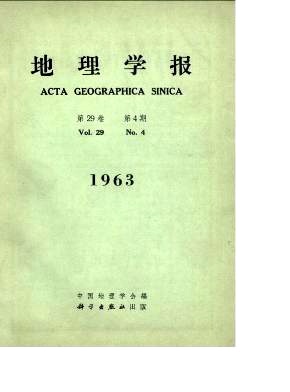PING-WEI HUANG
The present paper begins with the proposition that researches in physical geography, or the study of geographic environment, should be focussed on what may be termed the zone of activities, delimited approximately by the height of the vegetation and the ver-tical extension of the root system of the plants that may exist in the area concerned. An insight into the genesis, development, and territorial differentiation of the zone of ac-tivities must be substantiated by a sound knowledge of the exchanges of energy and matter both within the zone and between the zone and its outside world. Among the numerous forms of energy and matter taking part in shaping the geographic environment, heat and water play so important a role that their balances deserve priority in investiga-tions in physical geography. As a phase in the realm of heat and water exchanges in the zone of activities, the soil water balance is discussed to illustrate the principles, methods and procedures that may be adopted and the contributions that may be made by geographers along the suggested line of researches. The discussion is subsequently narrowed down to a few topics, including the estimation of soil water drainage, the de- termination of evapotranspiration by using soil moisture data, and the concept of avail-able soil moisture and field capacity. In this context, the progresses and problems are briefly surveyed, and, together with these, four recent papers by Wilcox on soil water published in 1959-1962 are reviewed critically. Among the findings of Wilcox, the formula, dω/dt=-ab(ω/a)(1+1/b) may be used for bare soil protected from evaporation with little loss of accuracy. If its use is to uncovered soil either with or without vegetation, there leaves much room for doubting its physical soundness. However, in view of the scantiness of accurate soil mois-ture data and the absence of a better method to account for all the complexities involved in the problem, it is probably not unfair to say that even for this latter condition, the approach proposed by Wilcox is still an improvement over the more crude water balance method in wide application by workers on soil water and evaporation, and would not lead to serious error, if due care is taken of the circumstances, under which the neglected factors cease to be negligible. As regards the upper limit of available soil moisture sug-Bested by Wilcox, the concept is theoretically unfounded and the method is tedious and does not yield results of much practical use. Recent advances in soil water physics re-veal that field capacity is not a precise quantity. It is, however, fairly reproducible and serves well as an approximate measure of the upper limit of the anoumt of water that would stay long enough in the soil to be of possible use to plants. If its nature and limitations are properly understood and the standard procedure of its determination is followed, there is no reason to deny its value in solving certain practical problems.
